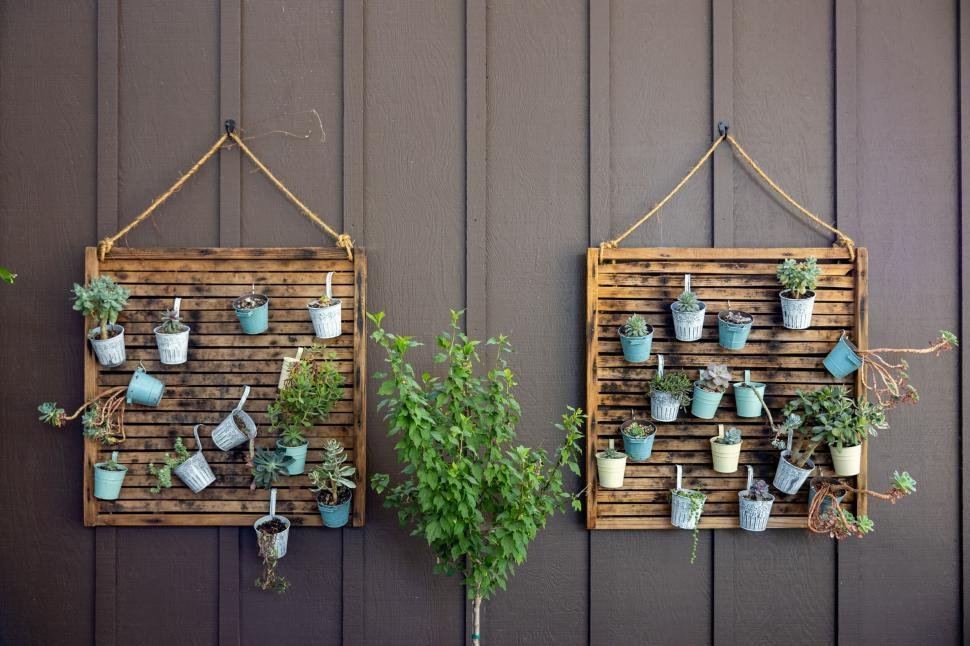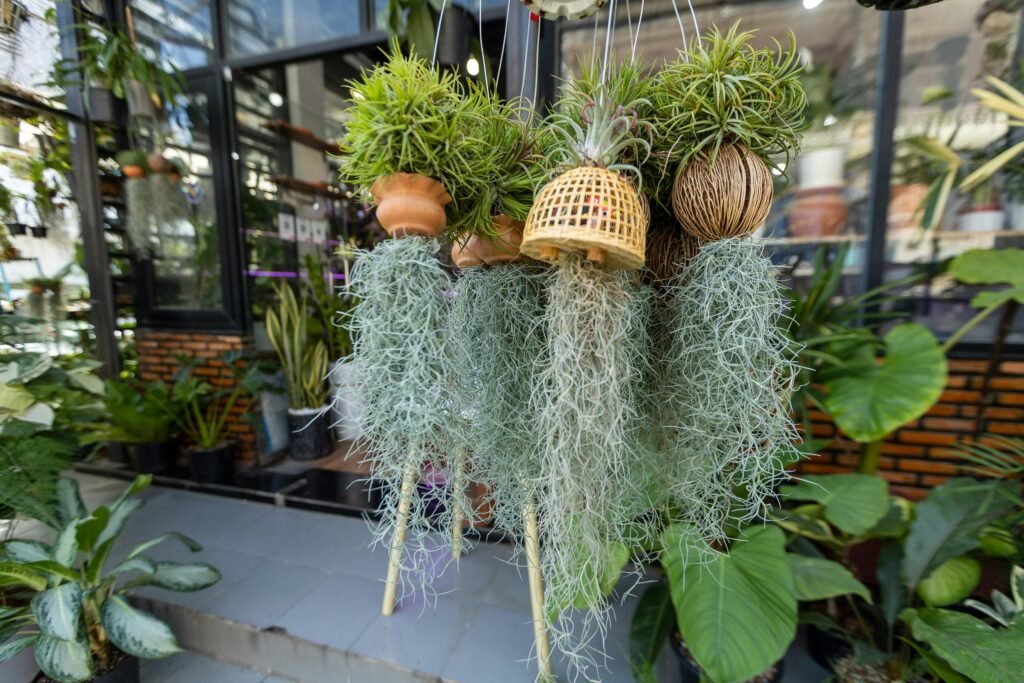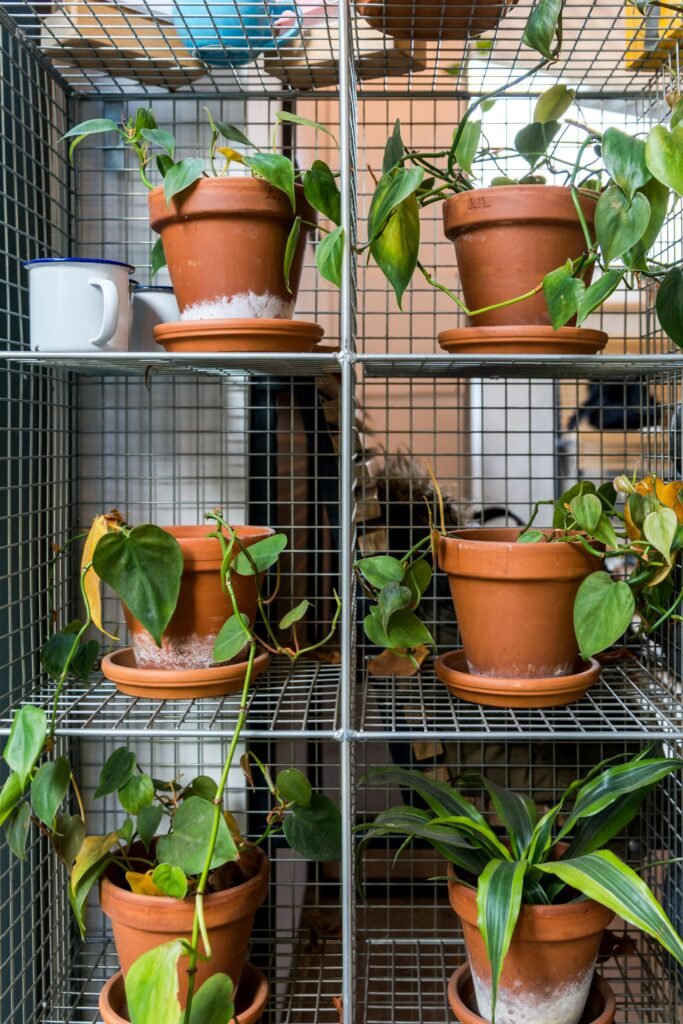Indoor Wall Garden-Trend in Home Gardening

For those fond of home gardening but have limited outdoor space in the current era of urban living, an indoor wall garden is a trend! The future of the banal life of greenery in indoor spaces is the barren walls that will now have living, breathing art on them. With an indoor wall garden, you can use the height of your space to bring a little nature indoors without it taking up valuable square footage. This modern trend that brings traditional gardening to a small apartment or large home offers accessibility benefits, green space, air quality enhancers, attractive homing and tranquillity with no limit on how restricted a space can be.
An indoor wall garden can range from simple hanging planters to more complex vertical systems that integrate an irrigation system. This allows people to tailor one design around their style and limitations. Additionally, with increasing numbers of people looking to decorate their homes through a green lens and improve the wellness factor, wall garden succulents are increasingly becoming more popular for their ability to marry form with function seamlessly. With many different plant design options and a low maintenance demand, having an indoor garden can be an easy way to add touches of nature to any room.
Table of Contents
ToggleWhat is an Indoor Wall Garden?
An indoor wall garden is a vertical arrangement of plants grown indoors and planted in the house to create functional and glam-looking walls. Gardening usually calls for horizontal space, but an outdoor wall garden lets plants grow in a vertical position, perfect if you do not have much room or live someplace with little floor area, from something as straightforward as hanging planters or wall-mounted shelves all the way to highly-integrated irrigation and lighting systems.
These gardens are versatile and can support many types of indoor plants, such as herbs, succulents, ferns or even flowers, depending on the light and environmental conditions of the room. Lately, this has been executed as a structure with different types of material that allows wooden or mettle pockets to click into place, holding the plants on (against) it.
In addition to being aesthetically pleasing, indoor wall gardens provide other practical benefits, such as improving air quality within the home and dampening sound pollution; they serve many functions that promote a sense of well-being in areas where nature might not be available on its own. Given the current trend of sustainable gardening, even amongst city dwellers hoping to make better use of limited space options, indoor wall gardens have gained popularity for this very reason.

Types of Indoor Wall Gardens
Indoor wall gardens come in many forms, with unique perks and suitabilities for various spaces and tastes. From an aesthetically pleasing feature to a functional system, you can get any style of these indoor vertical gardens according to your taste and needs. The inventory ranges from hanging planters and pocket gardens to modular living walls with self-irrigation built in, providing a range of options for different kinds of vegetation. By selecting the type of wall garden that suits your available space, light conditions and (perhaps most importantly) level of care, you can easily turn any room in your home into a green field.
Hanging Planters
For small and slender plants, hanging planters can be an understatedly beautiful indoor wall garden that brings greenery into a space without wasting valuable floor space. This style includes mounting planters or pots to walls and ceilings; plants then grow upwards in a vertical way, which also saves space. There are plant hangers on the windows that you can arrange according to your space and material: terracotta, ceramic, or metallic. These planters will complement any room style and available space, and their design features range from single pots to tiered arrangements.
Hanging pots work best with smaller indoor plants like succulents, trailing vines (like pothos or philodendrons) and even kitchen herbs (basil, thyme). Due to their requirement for substantial natural light, they can be placed near windows or in sunlit rooms to grow the plants properly. There are two good reasons to use hanging planters in an indoor wall garden: they are very versatile, and you can easily change their position, remove them, or add more as your little garden grows a bit bigger! This practice not only alters venture capital but also changes the atmosphere of every room, healthier air and a revitalized aestheticised environment.

Pocket Planters
Another practical and aesthetically appealing option for an indoor wall garden, this one offering a visual style strikingly different from the hydroponic herb farm above, is pocket planters. Usually made of fabric, felt or strong plastic and equipped with pockets for your plant to sit in. These pockets are mounted directly onto the wall, so create a vertical garden that can be as basic or complex as you like. Its design makes it simple to grow various plants in a vertical orientation and transforms a bare wall into living art.
Commonly used for low-maintenance varieties such as succulents, ferns, and herbs, pocket planters include many found in kitchens where homeowners can grow fresh mint, rosemary, and basil. The pocket design provides an excellent drainage system that allows water to be neatly dispersed between the plants without forming a pool. Moirée plans for the pocket planters to be stackable: a few rows of pockets across and some rows down offer flexibility in where plants can live and how they may look.
It’s simple to install and maintain on an indoor wall garden. Because they are lightweight, easy to water, and can be hung on your wall, they are perfect for small spaces like apartments that don’t allow enough sun at window level, so you might run out of room.

Shelves & Ledges

Smaller indoor wall gardens can be achieved using shelves or ledges. This means trying to keep your potted plants neat and organized by installing wall-mounted shelves or ledges, as a structured look is better than having hanging planters which ought to hang in the air in no man’s land, nor are pocket gardens also out of place. Not only can shelves be easily adjusted, but it’s also easy to move plants around or switch out pots. That makes it excellent for anyone who likes to refresh their indoor garden setup or experiment.
Shelves & Ledges are best for small -to medium-sized potted plants such as ferns, herbs, and decorative flowers. Shelves can be made with different sizes and materials, such as wood, metal or glass, matching your home interior. 3-Plants can enjoy their time in areas where sunlight hits; even around windows, you can position shelves.
One of the most obvious benefits that shelves and ledges offer are delivering a relatively clean, minimalist look with a lot more green color. It is a low-maintenance way to keep plants in a small space, and it’s easy to water the pots.
Modular Living Walls

These are stylish and effective ways to achieve an amazing green wall inside your home. They are built as a jigsaw puzzle using modules that lock together and can be filled to form giant or small vertical gardens. Plant spaces are typically provided in each module, and some examples may be built-in irrigation and drainage, ensuring the garden is always thriving.
This will make for the perfect indoor wall garden for any homeowner who wants various plants, from ferns and tropical species to herbs and flowering. Modular design is flexible regarding how the system can be placed in a space, allowing for expansion and rearrangement should I decide to grow my garden. In some systems, integrated lighting ensures your plants receive enough light, even in low-lit indoor spaces.
Modular living walls have the added benefit of being self-sustaining because a built-in irrigation system makes watering and plant care easy. This also makes them an easy indoor wall garden; you can opt for a large setup without spending too much time maintaining it. Modular living walls make a huge visual statement, creating cosy corners of lush green in any small space with modern interiors.
Create Your Indoor Wall Garden

An indoor wall garden may seem difficult, but it can be achieved easily with good planning and the right materials. How to Here is a simple guide to starting.
1. Choose the Right Location
The very first act that you have to take when planting an indoor garden wall is choosing the correct place in which it will grow without problems. Most plants need bright, indirect light, so placing your growing garden near a window is great. That being said, you can use grow lights if your plants get too little natural light.
2. Select the Right Plants
The key to success with indoor wall gardens is selecting plants that will grow well inside. Here are some great options:
Ferns: Best for indoors, thanks to their love of moist and low-light environments.
Succulents: The succulent class is a perfect option for busy homeowners as the plants are relatively low-maintenance and minimally needed.
Pothos: Another air-purifying plant, pothos are incredibly resilient to both low and high light conditions.
Plants and Herbs: Create herbs such as basil, mint or rosemary for a free leafy green wall garden. They taste as good as they look.
Philodendrons: Although philodendrons aren’t vine-like like some others, this is such an easy-care plant that it seems perfect for vertical gardens. Learn more about Philodendron here.
3. Choose a Wall-Mounting System
The systems for mounting plants on the wall vary depending on the space and budget you have or want to invest. Make it clear for more.
Shelves: Attaching shelves to your wall gives you even more flexibility regarding plant positioning. Pots can be rearranged for easy redecorating.
Wall planters abound: Many home stores sell attractive wall-mounting indoor varieties of these. This may be a simple pot or an elaborate modular system.
DIY Option: Get creative and make your structure by using materials like wood or wire grids to hold the pots.
4. Install an Irrigation System (Optional)
An irrigation method may be invaluable for contemplating big indoor gardens, particularly living walls. An automated watering system that guarantees the perfect amount of water as and when needed while eliminating time dedicated to manually watering them. Still, at smaller scales, you should be able to get away with hand watering just fine.
5. Maintenance
The upkeep of an indoor wall garden is kind of simple but not exactly a no-maintenance ordeal, and it will need some continued care. Maintain a close eye on the moisture level of your soil, prune any dead leaves that may arise and continue to inspect for pests. It is also important to rotate your plants for even lighting.
Best Places for an Indoor Wall Garden
Not sure where to put your new indoor wall garden? Here are some ideas to create;
Living room: For the living room, a walled garden can be made to act as a central design element, creating a jungle backdrop while you want to relax or party.
Kitchen: The kitchen is a great spot for some herbs & edible wall planting. They will instantly look more modern and be so convenient to grab for cooking.
Bathroom: Humidity-loving plants like ferns and moss enjoy the high humidity of bathrooms, making it a great option for some greens in this area that are often forgotten to be non-green.

Benefits We Get
While there are other benefits to an indoor wall garden, the use of vertical space is probably its biggest, making a ton of sense for small homes/apartments. Soaking toxins and releasing oxygen helps indoor air quality, promoting a healthier living environment. Furthermore, being surrounded by plants has been proven to lower stress, enhance mood, and increase focus, all assisting with mental health. They also regulate temperature, cooling hot air through plant transpiration and add much-needed aesthetics, turning walls into living art that pimps out almost any room. Check out more about it here.
So, there is no doubt that these walled gardens have become a symbol of modern home gardening for providing a beautiful, functional and environmentally friendly indoor green space. Whether you hope to clear the air, raise your spirits or just fancy adding a neat design element to your home, an indoor wall garden is one solution that crosses lifestyles and living spaces. From the simplest hanging planters to DIY transportable living walls, there are indoor garden styles for everyone and anyone.
Having a walled garden indoors helps with much more than just aesthetic appeal. This garden scale height is perfect for small spaces, city-dwelling homes, and healthier indoors. It shows how they can support mental wellness and be a comforting, welcoming presence in any room. Not only can indoor wall gardens help to lower temperatures indoors via plant transpiration, but they also add visual interest and some whimsy to your home.
Tabon
Most Viewed
Latest Articles





























